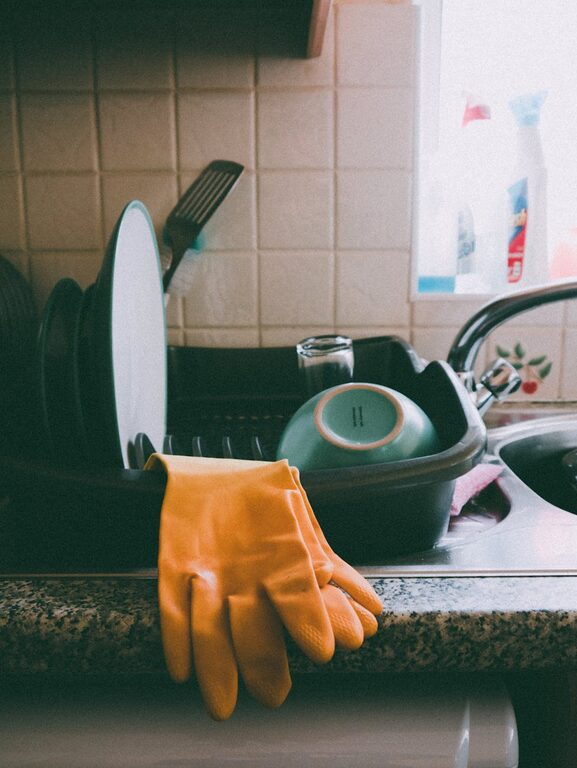Making dinner is often the enjoyable part of the day, but the cleanup afterward can feel overwhelming. Whether you’re cooking for one, a family, or hosting friends, tidying up the kitchen doesn’t have to take forever. With some smart habits and practical ideas, you can simplify the cleanup process, reduce stress, and spend more time relaxing after your meal.
In this post, we’ll explore easy strategies to make dinner cleanup faster and less taxing. From prepping before you cook to cleaning as you go, these tips can help you keep your kitchen pleasant and organized.
1. Prepare Before You Start Cooking
One of the best ways to speed up cleanup is to organize in advance.
Gather Your Tools and Ingredients
Start by collecting all the utensils, pots, pans, and ingredients you’ll need. Having everything ready prevents running back and forth, which can create more mess. Use bowls to measure out spices, oil, or chopped vegetables, so you can add them quickly during cooking and clean up those bowls at once.
Line Your Prep Area
Cover cutting boards or countertops with parchment paper or reusable silicone mats. This makes cleaning easier and protects your surfaces. Disposable paper towels or napkins can also help wipe up small spills immediately.
2. Clean As You Go
Cleaning as you cook can drastically reduce post-meal mess.
Wash Small Tools Immediately
Instead of letting spatulas, measuring spoons, or knives pile up, wash them or place them in the dishwasher right after use. This keeps your workspace clear.
Rinse Pots and Bowls Between Uses
If you use multiple bowls or pots, rinse or soak them right away. Soaking prevents food residue from hardening, making cleanup easier later.
Wipe Counters Frequently
Keep a damp cloth handy to wipe spills and crumbs as you cook. This prevents buildup and keeps your space tidy.
3. Use One-Pot or One-Pan Recipes
Minimize the number of dishes needed by focusing on recipes that use a single cooking vessel.
Benefits of One-Pot Meals
Stews, casseroles, stir-fries, or sheet-pan dinners are delicious and leave fewer pots to clean. Plus, these meals often simplify portioning and serving.
Simplify with Slow Cooker or Instant Pot
These appliances often require little prep and create minimal mess, as cooking and warming happen inside one container. Their removable parts tend to be dishwasher-safe, adding convenience.
4. Utilize Kitchen Tools That Aid Cleanup
Certain products can help cut down the time and effort required when washing up.
Silicone Utensils and Mats
Silicone is easy to clean and resists sticking, so food comes off effortlessly. Silicone baking mats replace parchment paper and reduce waste.
Dishwasher-Safe Cookware and Tools
Opt for cookware and utensils that can be placed in the dishwasher. This lets you load items immediately after use rather than letting them sit in the sink.
Multi-Use Containers
Use containers that can go from prep to fridge to microwave to table. This reduces the number of dishes and helps keep leftovers organized.
5. Delegate and Share Cleaning Duties
Cleanup doesn’t have to be a solo job.
Assign Tasks to Family Members
Even small helpers can clear the table, rinse dishes, or wipe counters. Creating a routine where everyone pitches in reduces the burden on any one person.
Make Cleanup Part of Mealtime
Encourage habits like clearing plates after eating or scraping leftovers into the compost or trash. This prevents leftover food from hardening on dishes and makes washing easier.
6. Organize Your Kitchen for Efficiency
A well-arranged kitchen supports faster cleanup.
Keep Cleaning Supplies Accessible
Store dish soap, sponges, and towels near the sink so you can quickly tackle messes.
Designate Areas for Dirty and Clean Dishes
Use a dish rack or drying mat close to the sink to keep clean dishes organized. Have a spot for dirty dishes to avoid clutter on counters.
Use Containers for Compost and Trash Nearby
Having compost and trash bins easily accessible encourages quick disposal of scraps during and after cooking, reducing waste buildup.
7. End with a Quick Tidy-Up Routine
Once the meal is done, follow a simple routine to finish cleanup.
Clear the Table
Remove plates, glasses, and utensils promptly after eating. Wipe the table with a damp cloth or cleaner to prevent stains.
Load the Dishwasher Immediately
Don’t let dishes sit. Load the dishwasher or wash pots and pans right after the meal to prevent food from drying on them.
Sweep or Wipe the Floor if Needed
Spills and crumbs can accumulate, so a quick sweep or mop under and around the dining area keeps the kitchen fresh.
—
Final Thoughts
Dinner cleanup doesn’t have to be a dreaded chore. By adopting these habits—like prepping carefully, cleaning as you go, and using the right tools—you can simplify your routine significantly. Involving others and maintaining an organized kitchen also go a long way in reducing cleanup time. Try out these ideas to make dinner cleanup easier and enjoy more quality time after your meal.
What are your favorite cleanup tips? Share them in the comments below!

